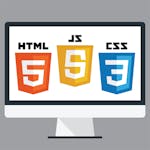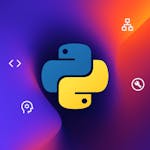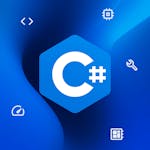Coding Terms: A to Z Glossary
Interested in Coding, but you keep seeing terms unfamiliar to you? This A-to-Z glossary defines key Coding terms you need to know.
Coding professionals pursue a career focused on various software development and programming aspects. They possess a diverse skill set encompassing programming languages, software development methodologies, problem-solving, algorithm design, debugging, testing, version control, and software documentation. Coding professionals are crucial in developing and maintaining computer applications, websites, and software systems. They write code, create innovative solutions, troubleshoot issues, optimize performance, ensure data security, and provide technical support to individuals and organizations. Their expertise enables them to contribute to computer systems' functionality, efficiency, and reliability, supporting users' needs and driving technological advancements.
This Coding glossary can be helpful if you want to get familiar with basic terms and advance your understanding of Coding.
Coding Terms: A to Z Glossary
Interested in Coding, but you keep seeing terms unfamiliar to you? This A-to-Z glossary defines key Coding terms you need to know.
Coding professionals pursue a career focused on various software development and programming aspects. They possess a diverse skill set encompassing programming languages, software development methodologies, problem-solving, algorithm design, debugging, testing, version control, and software documentation. Coding professionals are crucial in developing and maintaining computer applications, websites, and software systems. They write code, create innovative solutions, troubleshoot issues, optimize performance, ensure data security, and provide technical support to individuals and organizations. Their expertise enables them to contribute to computer systems' functionality, efficiency, and reliability, supporting users' needs and driving technological advancements.
This Coding glossary can be helpful if you want to get familiar with basic terms and advance your understanding of Coding.
Coding Terms
Algorithm
An Algorithm is a step-by-step procedure or set of rules for solving a specific problem or performing a task. It provides a clear, structured approach to solving problems and is fundamental to coding and programming. Algorithms can be expressed in various forms, such as pseudocode or flowcharts, and implemented in different programming languages.
Bug
A Bug refers to an error, flaw, or defect in a computer program that produces unexpected or incorrect results. Bugs can occur due to programming mistakes, logic errors, or compatibility issues. Debugging is the process of identifying and fixing bugs to ensure the proper functioning of the program.
Data Structure
A Data Structure organizes and stores data in a computer's memory or storage system. It defines the relationships, operations, and access methods for efficiently manipulating and retrieving data. Data structures include arrays, linked lists, stacks, queues, trees, and graphs.
Error Handling
Error Handling is anticipating, detecting, and handling errors or exceptions that may occur during program execution. It involves implementing strategies, such as try-catch blocks or error codes, to handle errors and prevent program crashes or unexpected behavior safely.
Function
A Function, a method, or a subroutine is a reusable block of code that performs a specific task or calculation. Functions help organize code, improve modularity, and enable code reuse. They accept input parameters, perform operations, and may return a value.
Git
Git is a distributed version control system widely used in software development. It allows multiple developers to collaborate on a project, track changes, and manage different code versions. Git enables efficient code management, facilitates collaboration, and provides conflict resolution mechanisms.
HTML (Hypertext Markup Language)
HTML is a standard markup language used for creating web pages and applications. It defines the structure and layout of content on a webpage, using tags and attributes to format and organize text, images, links, and other elements. HTML is the backbone of web development and is complemented by CSS and JavaScript.
IDE (Integrated Development Environment)
An Integrated Development Environment (IDE) is a software application that provides a comprehensive set of tools and features for coding, debugging, and testing. IDEs offer a user-friendly interface, code editors, compilers or interpreters, debugging tools, and other utilities that enhance the coding experience and streamline the development process.
JSON (JavaScript Object Notation)
JSON is a lightweight data-interchange format that is easy for humans to read and write and for machines to parse and generate. It is widely used for transmitting data between a server and a web application. JSON data is represented as key-value pairs and supports nested structures, arrays, and various data types.
Loop
A Loop is a programming construct that allows repetitive execution of a code block based on a specified condition. It helps automate tasks and process large amounts of data efficiently. Common loops include the for loop, while loop, and do-while loop.
Library
A Library is a collection of prewritten code modules or functions that can be reused in different programs. Libraries provide ready-made solutions to everyday programming tasks, saving time and effort for developers. They can include functions, classes, and other resources that extend the capabilities of a programming language.
Object-Oriented Programming (OOP)
Object-Oriented Programming (OOP) is a programming paradigm that organizes code around objects, which are instances of classes. It emphasizes concepts such as encapsulation, inheritance, and polymorphism. OOP allows modular and reusable code, promotes code organization, and facilitates software maintenance and extensibility.
Performance Optimization
Performance Optimization refers to improving a software application's speed, efficiency, and resource utilization. It involves analyzing and fine-tuning code, algorithms, and system configurations to minimize execution time, reduce memory usage, and optimize overall performance. Performance optimization aims to deliver a fast and responsive user experience.
Quality Assurance (QA)
Quality Assurance (QA) in coding refers to the activities and processes to ensure software quality and reliability. It includes testing, code reviews, and quality control measures to identify and rectify defects or inconsistencies. QA ensures that the software meets specified requirements and functions as intended.
Refactoring
Refactoring is the process of restructuring and improving existing code without changing its external behavior. It involves making code modifications to enhance readability, maintainability, and performance while preserving its functionality. Refactoring helps eliminate code smells, improve code organization, and reduce technical debt.
Stack
A Stack is a data structure that follows the Last-In-First-Out (LIFO) principle in programming. It allows elements to be added or removed only from one end, the top. Stacks are commonly used for managing function calls, tracking program execution, and handling recursive algorithms.
Syntax
Syntax refers to the rules and conventions that dictate the structure and format of a programming language. It defines how instructions and statements are written to form valid and meaningful code. Following the correct syntax is essential for the compiler or interpreter to understand and execute the code accurately.
Testing
Testing evaluates a software application or system to ensure it functions as expected and meets specified requirements. Testing includes writing test cases, executing tests, and validating results. It helps identify bugs, verify functionality, and ensure the overall quality of the software.
Variable
A Variable is a named storage location in a computer's memory that holds a value or data. Variables are used to store and manipulate data during program execution. They have a specific data type (integer, string, or boolean) and can be assigned new values throughout the program.
Version Control
Version Control, also known as Source Code Management (SCM), tracks and manages source code file changes. It allows developers to collaborate, maintain different versions of code, and track modifications over time. Version control systems, such as Git or SVN, provide mechanisms for branching, merging, and reverting changes.
Web Development
Web Development encompasses the creation and maintenance of websites and web applications. It involves designing user interfaces, writing code, integrating databases, and implementing functionality using web technologies such as HTML, CSS, JavaScript, and server-side scripting languages. Web development focuses on creating engaging and interactive experiences for users on the web.
XML (eXtensible Markup Language)
XML is a markup language that defines a set of rules for encoding documents in a human-readable and machine-readable format. It is widely used for structuring and storing data and for data exchange between different systems and platforms. XML allows for creating custom tags and provides a flexible format for representing structured information.
YAML (YAML Ain't Markup Language)
YAML is a human-readable data serialization format often used for configuration files and data exchange between different programming languages. It is designed to be simple and easy to read, with a syntax that uses indentation and key-value pairs. YAML is known for its readability and is often used in DevOps and configuration management.
Zero Day
Zero Day refers to a software vulnerability or security flaw discovered and exploited by hackers before the software developer or vendor becomes aware of it. It is called "Zero Day" because there is zero-day time to fix or patch the vulnerability before it is exploited. Zero Day vulnerabilities pose significant security risks and require immediate attention and mitigation.
Conclusion
Congratulations on completing the A-Z glossary of coding terms! You now have a solid understanding of key concepts and terminologies that are essential in the world of coding and programming. Whether a beginner or an experienced coder, this glossary will be a valuable resource to enhance your coding knowledge and skills. Remember to explore, stay curious, and continue expanding your coding expertise.
Learn in-demand Coding skills from industry leaders.
Coding Courses | Python Courses | Web Development Courses | JavaScript Courses | React JS Courses | Java Courses | Unity Courses | C# Courses | C++ Courses | SQL Courses | Angular Courses | CSS Courses | Docker Courses
 Join a community of over 100 million learners from around the world
Join a community of over 100 million learners from around the world Learn from more than 200 leading universities and industry educators.
Learn from more than 200 leading universities and industry educators. 70% of all learners who have stated a career goal and completed a course report outcomes such as gaining confidence, improving work performance, or selecting a new career path.
70% of all learners who have stated a career goal and completed a course report outcomes such as gaining confidence, improving work performance, or selecting a new career path.- 100% online
- Flexible schedule
- Mobile learning
- Videos and readings from professors at world-renowned universities and industry leaders
- Practice quizzes
Can’t decide what is right for you?
Try the full learning experience for most courses free for 7 days.Register to learn with Coursera’s community of 87 million learners around the world





